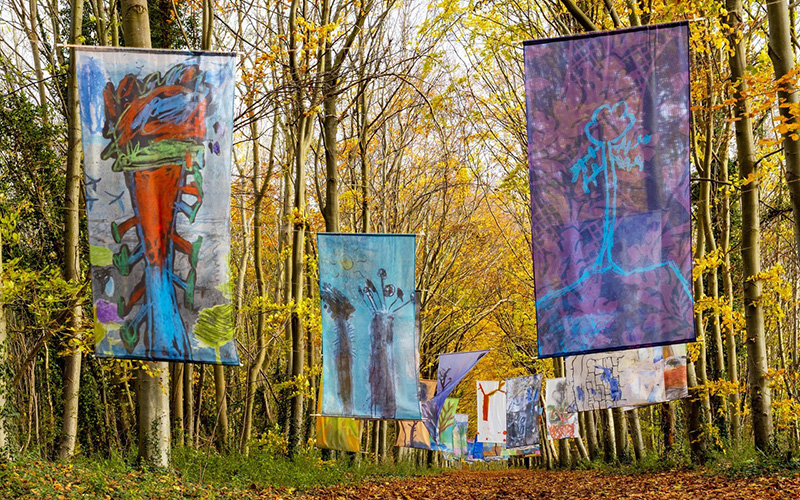Arts-in-nature practice improves mental health and connection with nature
Arts-based interventions delivered outdoors, or ‘arts-in-nature’ experiences, offer creative and inclusive means to promote children’s mental health and connection with nature.

30 May 2023
These activities are particularly beneficial for children with risk factors associated with adverse mental health, including those from low income households, those with special educational needs/neurodevelopmental differences, or those who have had adverse childhood experiences, all of whom may feel excluded from existing educational programs.
With four out of five UK children not feeling connected to nature1, spending creative time outdoors is more important than ever. Based upon the overwhelmingly positive effects of arts-in-nature experiences within and beyond the UK, this research suggests that these practices should be an integral part of the primary education curriculum, as well as being incorporated into the wider mental health infrastructure, including integrated care services.
Policy context
Arts-in-nature practice sets to address three contemporary societal challenges: a sharp rise in children’s mental health problems; an increasing disconnect from nature; and a school curriculum that fails to draw on our cultural, community and natural assets. Mental health problems cost the UK economy £118 billion annually, yet most of this is preventable2. In children and young people, the rates of mental health disorders have seen a sharp rise from 1 in 9 (12.1%) in 2017 to 1 in 6 (16.7%) in 20203. In response to what has been described as a mental health crisis, the UK government’s Mental Health Recovery Action Plan has been backed by £500 million of funding; of which, £79 million will be allocated to children and young people4.
Alongside this, in response to the emerging climate change and environmental crisis, in 2023 the UK government announced the five-year Environmental Improvement Plan5. A key strategic goal is the ‘Enhanced engagement with the natural environment’ and the commitment that everyone should live within 15 minutes’ walk of a green or blue space. These priorities echo the DfE’s Sustainability and Climate Change Strategy6, which committed to increase access to, and connection with, nature in educational settings. At the same time, the value of arts has been emphasised in Ofsted’s latest curriculum review which urges that “art should command an important place in every school”7. Arts-in-nature practice addresses these priorities through equity of provision and access to arts and nature for every child.
Key findings
Arts-in-nature practice
Arts-in-nature practice offers a creative and inclusive means to promote mental health through engaging children with nature. For example, Artscaping is an arts-in-nature practice developed by the arts and wellbeing charity, Cambridge Curiosity and Imagination (CCI). Since 2015, 7,812 people have engaged with Artscaping, including 2,569 children and young people and 197 educators. The AHRC-funded research studies ‘Eco-capabilities’ and ‘Branching out’ showed that Artscaping improved children’s mental health, connected them more with nature, and engaged them with issues of environmental sustainability and sustainable behaviours8. Findings indicated that following arts-in-nature experiences children felt happier with their life and were more optimistic about what the future holds for them9; teachers in particular reported this made them more engaged and confident learners. These outcomes are consistent with studies across the UK, US, Ireland, Australia and Hong Kong, which identify arts-in-nature practice as being effective in reducing health inequities (including physical health through promotion of physical activity10), improving nature connectedness and, thereby, contributing to greater environmental awareness and sustainability11.
“It has made me think differently – mental health support doesn’t always have to be something that’s gone through referral processes, that relies on external agencies and huge amounts of funding.” (Headteacher)
Image
Cambridge Curiosity and Imagination’s Fantastical Forest 2022, © Cambridge Curiosity and Imagination
 Close
Close

